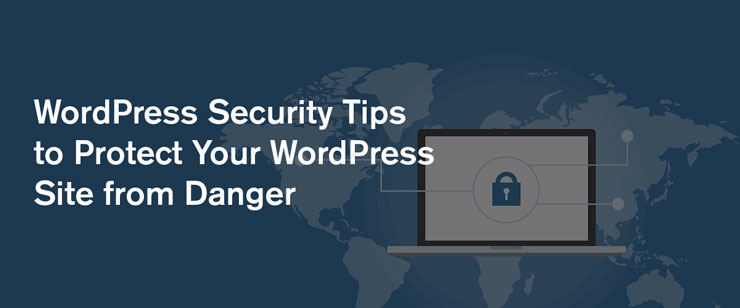
When it comes to Content Management System WordPress is by far the most popular anywhere in the world, with more than 70 million users. WordPress hosts over half he blogs that are found online and it used by some of the largest companies like NBC, CBS, CNN, etc. There are over 2.5 billion WordPress pages that are read by over 300 million people daily, while around 500.000 new posts and 400.000 comments are posted each day.
There are no signs that the growth of WordPress is going to slow, but what is known is that as more users come on board, the security risk grows higher. It is the responsibility of each user to make sure their site is as secure as possible. Let’s look at 6 WordPress security tips to protect your WordPress site from the danger of hacking.
1. Stay Current – is very important that you stay current and up to date with your WordPress site including plugins and themes.
2. Increase the Strength of Your Password -We hear a lot about strong passwords and yet we still create passwords that are weak and easy for hackers to obtain with automated software. Instead create a password that is not a real word and uses lower case, capital case, symbols and numbers – this will give you a strong password that’s less likely to be hacked.
3. Watch Your File Permission – You should keep an eye on your file permissions. You can set your file permissions with FileZilla.
Check this Video to Understand And Fix WordPress File Permissions In 5 Minutes
4. Use SSL Encryption – SSL Encryption is used to encrypt the data your blog sends out. This means that the data cannot be accessed as it leaves your router, which keeps account information secure. It makes the data difficult to intercept and difficult to decrypt. Usually you have to be prepare for SSL encryption but it’s worth the money. However, WordPress SSL encryption costs you nothing – you just need to add define (‘FORCE_SSL_ADMIN’, true) to your wp-config.php
Check this guide to know ‘How to install an SSL certificate for the Website?’
5. Use .htaccess – You will find the .htaccess file in the default hosting file, which can be used to block certain IPs.
6. Always Have a Backup – Regardless of how good your security there is always the risk of being hacked, even if it’s minimal, so you need to back up at least once a week. Backup your data daily and store it offsite, so that if you do find yourself hacked you will have a good backup to get back up and running.
